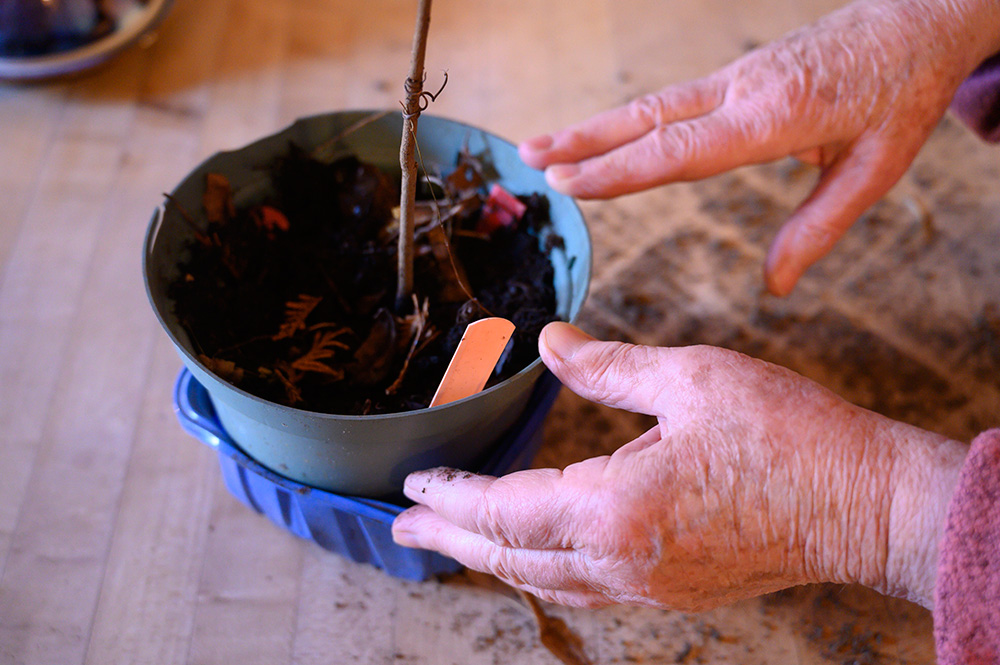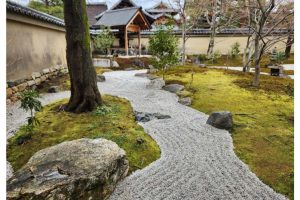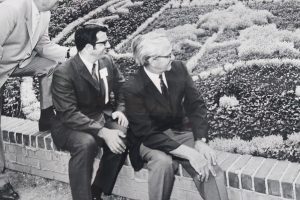
How a Famous Tree Scientist Seeks Well-Being in Nature During the Pandemic
Andrew Nikiforuk 31 Dec 2020 | TheTyee.ca
Tyee contributing editor Andrew Nikiforuk is an award-winning journalist whose books and articles focus on epidemics, the energy industry, nature and more.
We asked famed botanist and medical researcher Diana Beresford-Kroeger about how she keeps healthy this season.
The COVID-19 pandemic will not end tomorrow. Vaccines, which will also put pressure on the virus to mutate further, will not reach the majority of the population until late summer or fall — if we are lucky. Which means we are in for more anxious months as we wait to know our collective fate.
Having had the privilege to spend time last year with the brilliant botanist Diana Beresford-Kroeger, I checked in with her and found her, as well, asking, “How do we keep well in a time of extra worry during a pandemic?”
The answer, she says, is simple: recalibrate your life, slow down and take advantage of nature’s bountiful remedies during a time of disquiet and unease. Among Beresford-Kroeger’s books are To Speak for the Trees and The Sweetness of a Simple Life. Given her intimate knowledge of trees, not surprisingly, the author and scientist seeks in their presence calm and, she says, physiological benefits.
Beresford-Kroeger holds a bachelor of science in classical botany, a B.Sc. in medical biochemistry, a master’s degree in plant physiology, a PhD in cardiac ischemia (damage due to low levels of oxygen in the heart), and a diploma in general surgery together with a fellowship in the effects of radiation on biology systems. She has published in the top medical journals in the world, such as the American Heart Journal.
She invented an artificial blood (stroma-free-hemoglobin) and is an expert on the movement of blood through the heart. She has studied plants for their medicinal properties, especially for cancer treatment.
Life, she reminds us, is not always as complicated as we imagine.
“Over the holidays, you go into the living room and have a small glass of whiskey and a big laugh,” she says. “It is the people we love and hold in our hearts and that’s all that matters. There is nothing stronger than love.”

When outdoors, she finds many tonics provided by nature. She likes, for example, to take a good forest bath. The ancient practice requires that you slowly walk among the pines for approximately 15 minutes while breathing deeply to oxygenate the lower regions of your lungs. (Harvard University and Japanese scientist Dr. Qing Li recently invited Beresford-Kroeger to contribute to the International Handbook of Forest Therapy.) The sun on the pines releases alpha and beta pinenes. These pinenes go into your lungs and cross the barrier into your circulatory system, and from there boost your immune system, Beresford-Kroeger notes.
She’s an unabashed tree-hugger. But not just any tree. West Coasters, she says, should hug the broad-leafed and cinnamon-coloured Arbutus tree (Arbutus menzeisii), especially in April or May. That’s when it produces buds and come into flower. She suggests you put your hands on the trunk of the tree and lean against it and breathe in the aerosols produced by the canopy. The Arbutus tree is a member of the heather family (Ericaceae).
The tree exudes natural antibiotic and antiviral properties, she says, and whenever you walk through heather, it bursts forth wonderful aromatic medical compounds. It is the basis of many Indigenous medicines of North America, too.
Beresford-Kroeger says there’s a reason people feel good around a fire pit — at a COVID-safe distance of course nowadays. If one puts a fresh evergreen bough — pine or hemlock — on top, she says, it releases alpha and beta pinenes and sterilizes the air and that is an added bonus. Burning pine boughs, a custom at Indigenous funerals around the world, can help ease both depression and anxiety, she says.
Toss a few pinecones in, she adds, and the oleoresin they contain will help sterilize the air. The effect will last for a half hour or so.
When feeling anxious or depressed, Beresford-Kroeger is partial to an “Old Man willow.”
She suggests sitting under a willow tree for 15 minutes, particularly one facing a body of water. Breathe deeply under its branches, and you’ll get a good dose of salicylic acid and 22 types of airborne molecules including lactones that have a resting, analgesic and anti-inflammatory effect on the body, she says.
If you live far from the embrace of the willow or even other trees, there still are things you can do to emulate Beresford-Kroeger’s natural approaches to keeping a healthy state of mind. She suggests, for example, smiling.

Smiling boosts neurotransmitters like dopamine and serotonin and decreases the cortisol levels in the body, which is part of the flight-and-fight response. If you reduce the cortisol, you give a boost to your body and heart. Smile and take life as it comes, she says. And if you don’t like smiling, try prayer or finding a cow or stone to stare at. Generosity of thought brings cortisol levels down, and we can all afford to be generous, she notes.
Seek sunshine whenever it breaks through.
As one study found, UV light “will not replace the mop and bucket,” but it helps. The sunlight will help keep your clothing more sterile. And then shake your clothing out, she advises.
And eat well. The medical biochemist suggests drinking plenty of organic whole milk, “which has a high fatty acid ratio and is good for brain health. Wild Pacific salmon have a wonderful linolenic acid content, which is one of the essential fatty acids necessary for good health.
“Currants are also important in my diet. I eat black currants and drink Ribena every day. The black currants that grow in the boreal forest have long been used by Indigenous people to improve the circulatory system. All the pulses [peas, beans and lentils] and other legumes are also beneficial at this time. They have lectins, which give the immune system a great power to act in a defensive manner to protect the body. All of these good foods will improve your general health.”
Don’t mistake Beresford-Kroeger for a naysayer about the latest public health prescriptions for slowing the spread of COVID-19. She is all for social distancing greater than six feet. “The lungs are a bellows system to get rid of air full of carbon dioxide. If you find yourself behind a runner or a group of runners, remember their breath is more explosive, and their aerosols will trail a bigger distance. So get out of their path and smile at them,” she says.
And Beresford-Kroeger is careful to make sure the mask she wears fits snugly. “Before I put on my mask, I dab the oleoresin from the balsam poplar on my nose. It is a member of the willow family, and the most northerly member of the willow family in the boreal forest. It is one of the most numerous and hardy trees in the north and can survive extreme cold and heat.
“It produces buds that look like black modified leaves. These buds are sticky to touch and produce a huge fragrance. Their aromatic oleoresin has 20 medicinal biochemicals and all act synergistically. The primary ones are bisabolol and arachidonic acid. It also produces prostaglandins, which are nasal constrictors.
“You can make your own salve by submerging the winter buds with olive oil, heating them and then straining the lot. The salve acts like a very gentle Vicks VapoRub on the nose.”
Beresford-Kroeger claims that a dab of this salve on each nostril may “reduce the ability of the nose to take in the virus.
“I put a touch on my nose, put on my mask, and then head off to play with the new cats, Boots and Bella, and see what mischief they are capable of inflicting on their new household.”
Article Source: The Tyee



